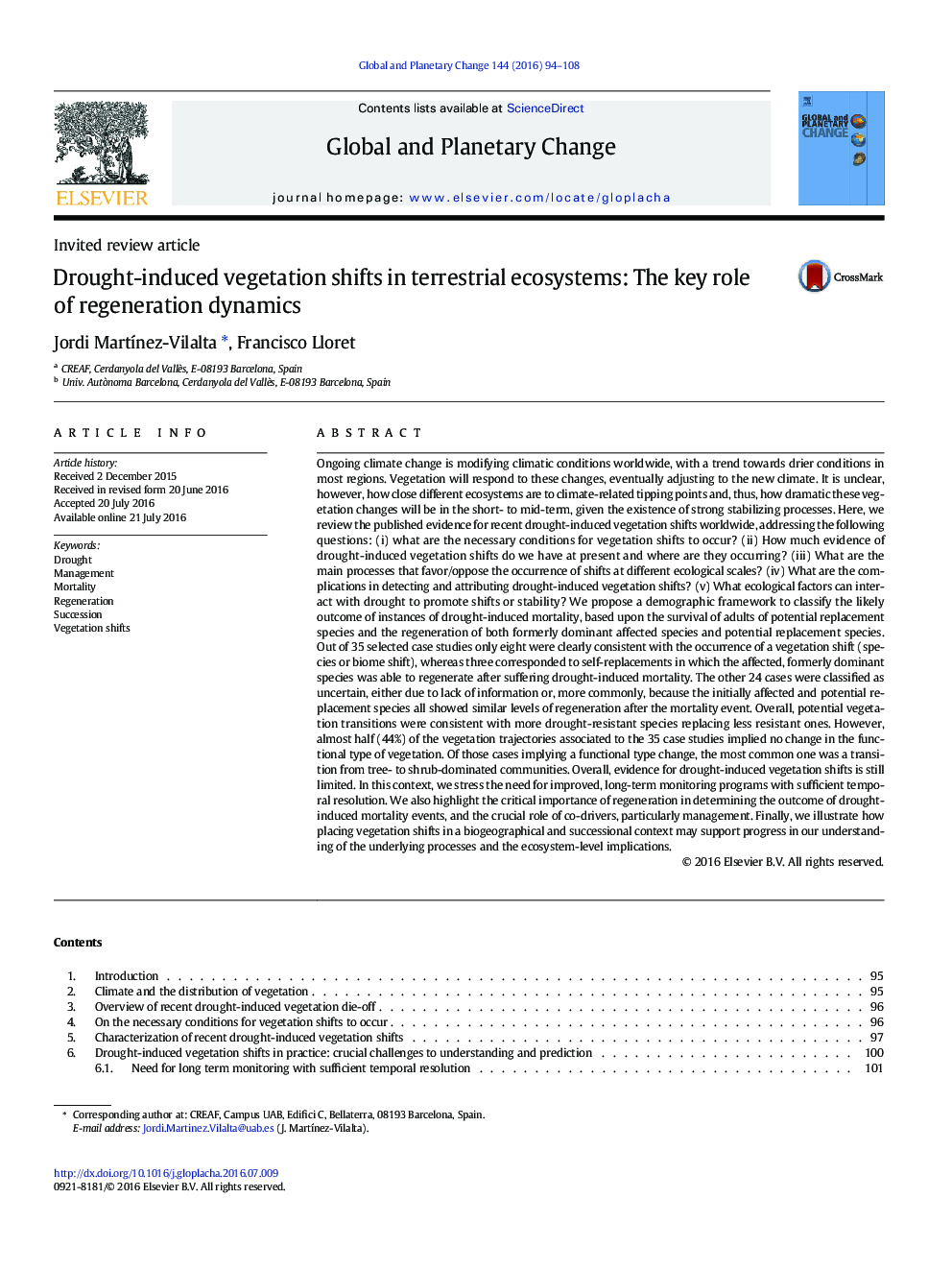| کد مقاله | کد نشریه | سال انتشار | مقاله انگلیسی | نسخه تمام متن |
|---|---|---|---|---|
| 4463272 | 1621638 | 2016 | 15 صفحه PDF | دانلود رایگان |
• We review the evidence for recent drought-induced vegetation shifts worldwide.
• A demographic framework to classify the outcome of mortality events is proposed.
• Only 8 out of 35 selected case studies were consistent with a vegetation shift.
• We highlight the importance of regeneration dynamics after the mortality event.
• The key role of co-drivers (particularly management) is also stressed.
Ongoing climate change is modifying climatic conditions worldwide, with a trend towards drier conditions in most regions. Vegetation will respond to these changes, eventually adjusting to the new climate. It is unclear, however, how close different ecosystems are to climate-related tipping points and, thus, how dramatic these vegetation changes will be in the short- to mid-term, given the existence of strong stabilizing processes. Here, we review the published evidence for recent drought-induced vegetation shifts worldwide, addressing the following questions: (i) what are the necessary conditions for vegetation shifts to occur? (ii) How much evidence of drought-induced vegetation shifts do we have at present and where are they occurring? (iii) What are the main processes that favor/oppose the occurrence of shifts at different ecological scales? (iv) What are the complications in detecting and attributing drought-induced vegetation shifts? (v) What ecological factors can interact with drought to promote shifts or stability? We propose a demographic framework to classify the likely outcome of instances of drought-induced mortality, based upon the survival of adults of potential replacement species and the regeneration of both formerly dominant affected species and potential replacement species. Out of 35 selected case studies only eight were clearly consistent with the occurrence of a vegetation shift (species or biome shift), whereas three corresponded to self-replacements in which the affected, formerly dominant species was able to regenerate after suffering drought-induced mortality. The other 24 cases were classified as uncertain, either due to lack of information or, more commonly, because the initially affected and potential replacement species all showed similar levels of regeneration after the mortality event. Overall, potential vegetation transitions were consistent with more drought-resistant species replacing less resistant ones. However, almost half (44%) of the vegetation trajectories associated to the 35 case studies implied no change in the functional type of vegetation. Of those cases implying a functional type change, the most common one was a transition from tree- to shrub-dominated communities. Overall, evidence for drought-induced vegetation shifts is still limited. In this context, we stress the need for improved, long-term monitoring programs with sufficient temporal resolution. We also highlight the critical importance of regeneration in determining the outcome of drought-induced mortality events, and the crucial role of co-drivers, particularly management. Finally, we illustrate how placing vegetation shifts in a biogeographical and successional context may support progress in our understanding of the underlying processes and the ecosystem-level implications.
Journal: Global and Planetary Change - Volume 144, September 2016, Pages 94–108
